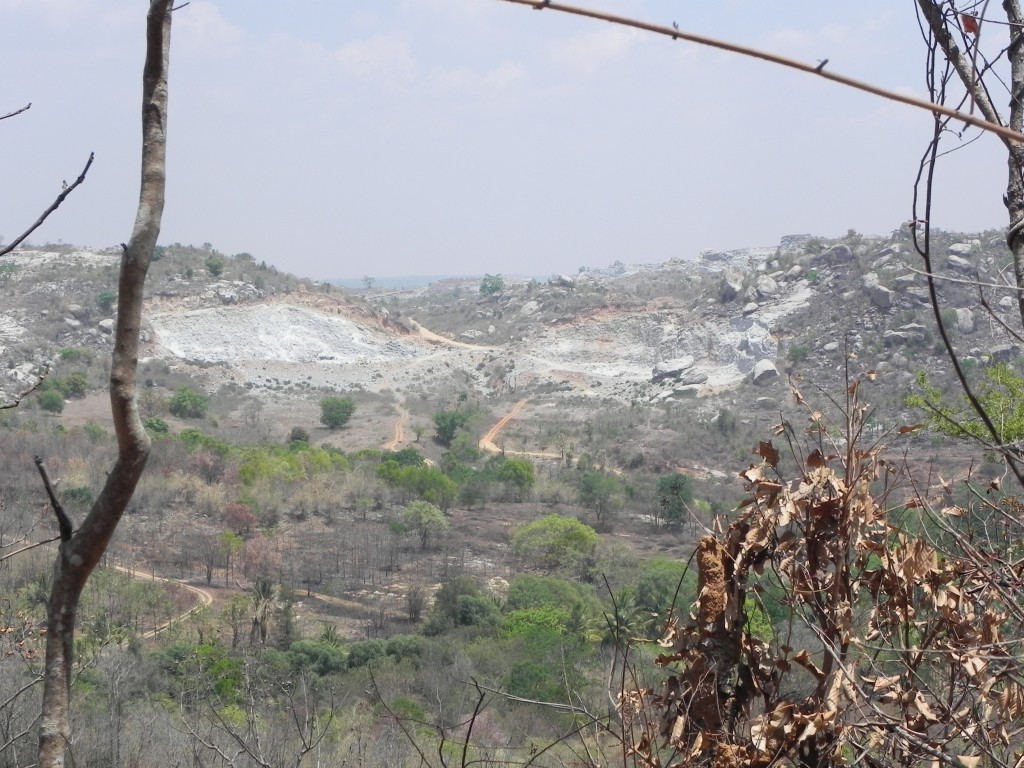Recently I read a scathing online article criticizing the India government for failure to enforce an order it issued on January 9, 1991. The order states that “No quarry or quarry lease should be granted to units in the one-km radius around the boundary of a national park.” The order was meant to preserve the no-quarry-zone as a safe zone for wildlife.
I am personally familiar with this problem. For three months this past spring I lived in Bannerghatta, the center of quarry activity.
Hundreds, if not thousands, of villagers live in this area. Many hundreds of these same villagers are employed by the quarry, creating a dilemma: protect the wildlife, the forest and public health or make jobs the priority.
The villages are poor, with limited means of generating a living outside of raising livestock and growing crops. Quarry work is a welcome alternative for many of them. In my area, one village has prospered immensely due to their close affiliation with the quarry. Dump trucks line the village road each evening as workers return from hauling rocks from the quarry to wholesalers. Their work is very lucrative.
Unfortunately, the personal downside to the quarry seems to have escaped the villagers. Chances are they are unaware of how detrimental it is to their health to breathe in the fine dust the quarry creates. In addition to transporting truckloads of the blasted rock, many workers spend the entire day smashing rocks—by hand—into small pebbles to create gravel for road beds. The dust created by their labor is thick in the air and they breathe it for hours on end. Much like black lung disease, which affects coal miners, lung disease is a real concern for these laborers. But no one seems to be concerned about their welfare.
My house sits at the bottom of a hill only a few hundred meters from the national forest. I could not see the quarry from my location, I felt its presence every day.
I could track the quarry’s illegal activity like clockwork. When the sun set and dusk slipped into darkness, a shockingly deafening series of dynamite blasts would rock the land, causing me to nearly jump out of my skin. Even though I knew to expect the blasts, their intensity always shocked me. Sitting on my porch I could feel the vibration of huge granite boulders splitting apart, followed by the unnerving echoes of the blast reverberating over the hill into the adjacent forest. Following the blasts came the ghostly sound of tons of rubble cascading down the side of the quarry, bringing with it a thick cloud of granite dust particles that covered every surface, inhaled by all breathing beings within miles of the quarry.
As result of non-enforcement, the blasting continues unabated, leaving behind a layer of dust on everything. Leaves, plants, furniture, floors and even the lake are covered with a layer of fine granite dust. The daily ritual of dusting and sweeping was a constant reminder of what we and the forest residents inhaled with each breath.
According to M Devaraj, deputy conservator of forests, Bannerghatta National Park, “We are authorized to remove the quarry equipment or stop quarrying if the quarries are inside the forest. But since all these quarries are in revenue land, it is the duty of the revenue and mines and geology departments to stop quarrying as per the 20-year-old government order.’’
The government’s reluctance to enforce the order mirrors their response to other orders meant to protect the forests and her inhabitants. Just as the government order to remove elephants from zoos has lacked enforcement, the quarry order has failed to benefit those it intends to protect. Although government orders indicate knowledge of what is right, the lack of enforcement leaves one to question the real purpose of their enactment.
It takes a brave person to speak out in India. I am encouraged that Y Maheswara Reddy, DNA, spoke out about the illegal quarry activity. If enough people are willing to do the same, perhaps change will begin and the wildlife and forest can experience some level of protection from potentially lethal activity.
Read the original article written by Y Maheswara Reddy.

